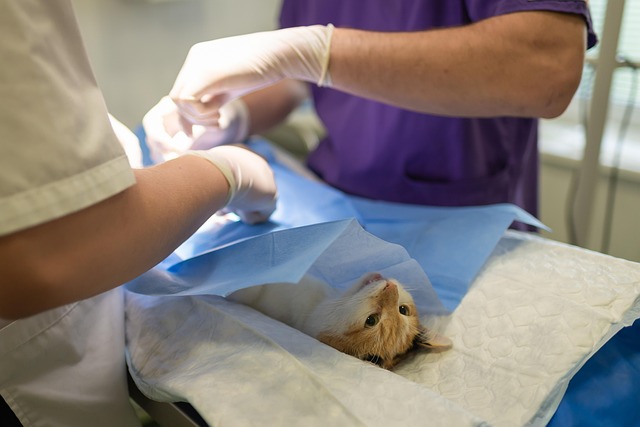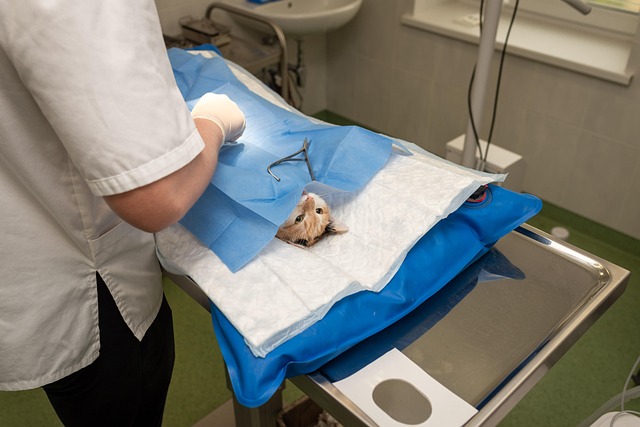In the UK, translating surgical procedure instructions requires strict adherence to legal standards and precise communication to ensure patient safety. Specialized translation services play a vital role in bridging language and cultural gaps, aligning with regulations like MHRA guidelines and NHS terminology. Choosing experienced providers with medical expertise ensures accuracy, while digital platforms enhance collaboration among healthcare professionals. High-quality translations significantly improve patient outcomes and safety, as demonstrated by case studies. With growing multicultural demands post-Brexit, professional human translators remain crucial for contextually appropriate communication in the UK healthcare sector.
“Are you prepared for UK compliance with translated surgical instructions? In today’s global healthcare landscape, ensuring clear and accurate communication is paramount. This comprehensive guide explores the legal requirements for surgical instructions in the UK, highlighting the critical role of professional translation services. Discover key challenges in translating medical content, learn best practices for integration, and gain insights from successful case studies. Additionally, we offer actionable steps to help your organization embrace the future of healthcare translation in the UK.”
- Understanding the Legal Requirements for Surgical Instructions in the UK
- The Role of Accurate Translation in Medical Compliance
- Key Challenges in Translating Surgical Procedures for UK Market
- Choosing the Right Language Services Provider for Medical Translations
- Ensuring Quality and Consistency in Translated Medical Content
- Best Practices for Integrating Translated Instructions into Clinical Workflows
- Case Studies: Successful Translation Projects for Surgical Guidance
- The Future of Translation in UK's Healthcare Sector: Trends and Innovations
- Actionable Steps to Prepare Your Organization for UK Compliance
Understanding the Legal Requirements for Surgical Instructions in the UK

In the UK, medical and surgical instructions must meet stringent legal requirements to ensure patient safety and compliance with regulations. When it comes to surgical procedures, clarity and precision in communication are paramount. The primary focus is on providing comprehensive, easy-to-understand instructions that accurately convey critical information about the surgery, including pre- and post-operative care.
Translation services for Surgical Procedure Instructions UK play a vital role in ensuring these legal requirements are met, especially given the increasing diversity of patient populations. Professional translators specializing in medical terminology must translate these instructions to make them accessible to a wide range of patients, irrespective of their native language. This involves not just translating words but also understanding and adapting cultural nuances and medical jargon to maintain the integrity of the information.
The Role of Accurate Translation in Medical Compliance

In the medical field, precision is paramount, and this holds especially true for surgical procedures. When it comes to ensuring compliance with UK regulations, accurate and reliable translation services for surgical procedure instructions play a pivotal role. With an increasing number of healthcare providers offering cross-border care, the need for clear, consistent, and culturally appropriate translations has never been more critical.
Translation services that specialise in medical documentation must possess a deep understanding of both the source and target languages, as well as the cultural nuances involved. Inaccurate or inadequate translations can lead to dangerous misunderstandings, miscommunications, and potential legal issues. Therefore, healthcare organisations should seek out reputable translation companies with experienced linguists who are proficient in translating surgical instructions, ensuring that every detail is captured accurately and that the final document adheres strictly to UK compliance standards.
Key Challenges in Translating Surgical Procedures for UK Market

The translation of surgical procedure instructions for the UK market presents several unique challenges. One of the primary difficulties lies in ensuring accuracy and consistency across complex medical terminology. Surgical procedures often involve specialized language and nuanced concepts that require precise translation to maintain their integrity and effectiveness. Misinterpretation or incorrect translation can lead to critical errors, impacting patient safety and the overall success of the procedure.
Additionally, cultural considerations play a significant role. Medical practices and guidelines vary across regions, and what is considered standard protocol in one country might differ in another. Translation services for surgical instructions must be adept at navigating these cultural nuances to ensure that the translated content aligns with UK healthcare standards and regulations. This includes understanding local preferences, clinical practices, and any specific terminology used within the NHS (National Health Service). Effective translation goes beyond words; it involves a deep comprehension of medical contexts to bridge the gap between languages and cultures.
Choosing the Right Language Services Provider for Medical Translations

When it comes to ensuring accurate and reliable translation services for surgical procedure instructions in the UK, selecting the right partner is paramount. Medical translations demand a deep understanding of both language and industry nuances, as well as adherence to stringent regulatory standards. Look for providers who not only possess expertise in medical terminology but also have experience working specifically with surgical documentation.
Reputable translation companies will employ qualified translators with extensive knowledge of anatomy, pharmacology, and surgical procedures. They should also implement rigorous quality assurance processes, including proofreading, editing, and desktop publishing, to guarantee error-free translations. Additionally, ensuring compliance with UK regulations, such as the Medicines and Healthcare products Regulatory Agency (MHRA) guidelines, is essential to avoid any legal or safety issues.
Ensuring Quality and Consistency in Translated Medical Content

Ensuring quality and consistency in translated medical content is paramount, especially when it comes to surgical procedure instructions in the UK. Professional translation services for such critical material must adhere to stringent standards to avoid any potential risks to patient safety. This involves not just linguistic proficiency but also a deep understanding of medical terminology and procedures across different languages.
Consistency is key; translation should maintain the original meaning, tone, and clarity of the source content. It’s crucial that surgical instructions are accurately conveyed without loss or misinterpretation. Reputable translation services employ specialized medical translators who are native speakers to guarantee both linguistic accuracy and cultural appropriateness. This meticulous process ensures that when healthcare professionals in the UK refer to translated surgical guides, they can do so with complete confidence, knowing that patient care remains at the highest level.
Best Practices for Integrating Translated Instructions into Clinical Workflows

Integrating translated surgical procedure instructions into clinical workflows requires a strategic approach to ensure accuracy, accessibility, and efficiency. Firstly, it’s crucial to involve medical professionals in the translation process to guarantee precise communication of complex procedures. Expert translators with medical backgrounds can adapt instructions for both language and cultural nuances, enhancing patient safety. Additionally, utilizing specialized translation services for surgical procedure instructions in the UK ensures a consistent quality standard. These services often employ terminologists and follow strict quality control measures, aligning with industry regulations.
Best practices suggest creating a centralized system for managing translations, especially when dealing with multiple languages. This involves establishing protocols for document formatting, terminology consistency, and version control to streamline workflows. Digital platforms facilitating collaboration between healthcare providers, translators, and interpreters can significantly enhance efficiency. Moreover, regular training sessions on using these platforms and reviewing translated materials ensure that clinical staff remain adept at integrating foreign language instructions into their daily practices.
Case Studies: Successful Translation Projects for Surgical Guidance

In recent years, there has been a growing emphasis on clear and precise communication in healthcare, especially with surgical procedures requiring detailed step-by-step guidance. Case studies show that high-quality translation services for surgical procedure instructions have significantly improved patient safety and care outcomes. For instance, one leading UK hospital witnessed a reduction in post-operative complications after implementing translated instructions for complex surgeries performed on international patients.
These successful projects highlight the importance of professional medical translators who understand both the language and cultural nuances. By utilizing translation services specialized in surgical guidance, healthcare providers can ensure that instructions are not only accurately conveyed but also tailored to meet the needs of a diverse patient population. This is particularly crucial in the UK, where a multicultural workforce serves a varied patient base, demanding effective communication across languages to avoid misunderstandings and potential risks during surgeries.
The Future of Translation in UK's Healthcare Sector: Trends and Innovations

The future of translation in the UK’s healthcare sector is poised for significant growth and innovation, especially with the increasing demand for accessible medical information. As the country navigates post-Brexit regulations, the need for high-quality translation services for surgical procedure instructions has become more critical than ever. The UK healthcare industry recognises that accurate and timely translation is essential to ensuring patient safety and providing equitable care to a diverse population.
Trends indicate a shift towards advanced technologies, such as machine translation (MT) and artificial intelligence (AI), which offer faster and more cost-effective solutions. However, these innovations are often combined with human expertise to ensure precision and cultural adaptability. With the rise of telemedicine and multilingual patients, translation services for surgical instructions must keep pace by offering specialized medical terminology and contextually appropriate language. This demands a proactive approach to stay updated with the latest advancements in both technology and language practice within the healthcare domain.
Actionable Steps to Prepare Your Organization for UK Compliance

To prepare your organization for UK compliance regarding translated surgical procedure instructions, start by assessing your current documentation. Identify all relevant materials that require translation services for surgical procedure instructions UK-wide. This process involves a thorough review of your procedures to ensure no critical information is left untranslated.
Next, engage professional translators who are not only fluent in the target languages but also have medical expertise. They should be capable of accurately translating complex medical terminology. Implement a quality assurance (QA) system to verify the accuracy and consistency of translations. Regular training sessions for staff on cultural nuances and regulatory requirements will further ensure compliance.
In light of the evolving legal landscape and growing importance of precise medical communication, organizations across the UK must be prepared to meet compliance standards with translated surgical instructions. By understanding the key requirements, leveraging high-quality translation services, and implementing best practices, healthcare providers can ensure effective patient care and seamless integration of translated content into clinical workflows. With ongoing innovations in translation technologies and a focus on quality assurance, the future of medical translation in the UK looks promising, enabling better access to quality healthcare for all.
